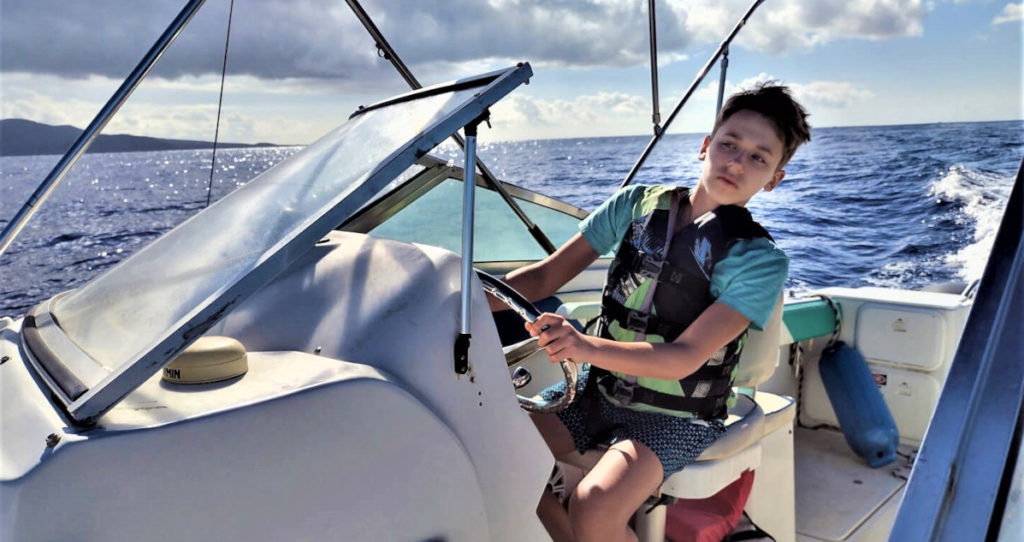
Yes, you can rent a boat in Maui. There are options for sailing, fishing, paddling, jet skiing and cruising on the second largest and second most populated island in Hawaii. Let’s see what it takes to get our on the water in someone else’s boat here.
What’s Good
- Very accessible from US, especially the Western States.
- It is an island, surrounded by water, with incredible natural beauty
- High level of tourism means room for niche opportunities
- Lack of traditional hazards to navigation found elsewhere
What’s Not
- The surf and rocky shore do not lend themselves well to inexperienced boaters
- Rough, and often unpredictable conditions limit your ability to go out
- The industry is focused on high volume tours that deliver on low expectations
Boating Conditions in Maui
Maui is a small island in the middle of the Pacific Ocean. It can be subject to violent surf conditions as swells build up over thousands of miles before reaching the shore and being compressed onto the beaches. Like other islands in Hawaii, the ‘lee’ shore (downwind) on the East, and Northeast side tends to be the most protected from weather (both wind and rain). This is where you’ll find most of the resorts, boat rentals, and charters. On this side of the island, you’ll usually find manageable waters once you get out of the surf a hundred or so yards offshore.
The weather is calmer in the morning. So, the earlier you can plan to start, and end, your day, the better. And by early, I mean, plan on being back on shore between 11:00am and 1:00pm as the wind and surf start to pick up. The weather is pleasant year-round, benefiting from the moderating effect of all that ocean water. Winter is wetter than Summer, but you’ll still be able to find sunshine most days on that ‘lee’ shore.
Things to do on a Boat Rental in Maui
Snorkeling at Molokini Crater
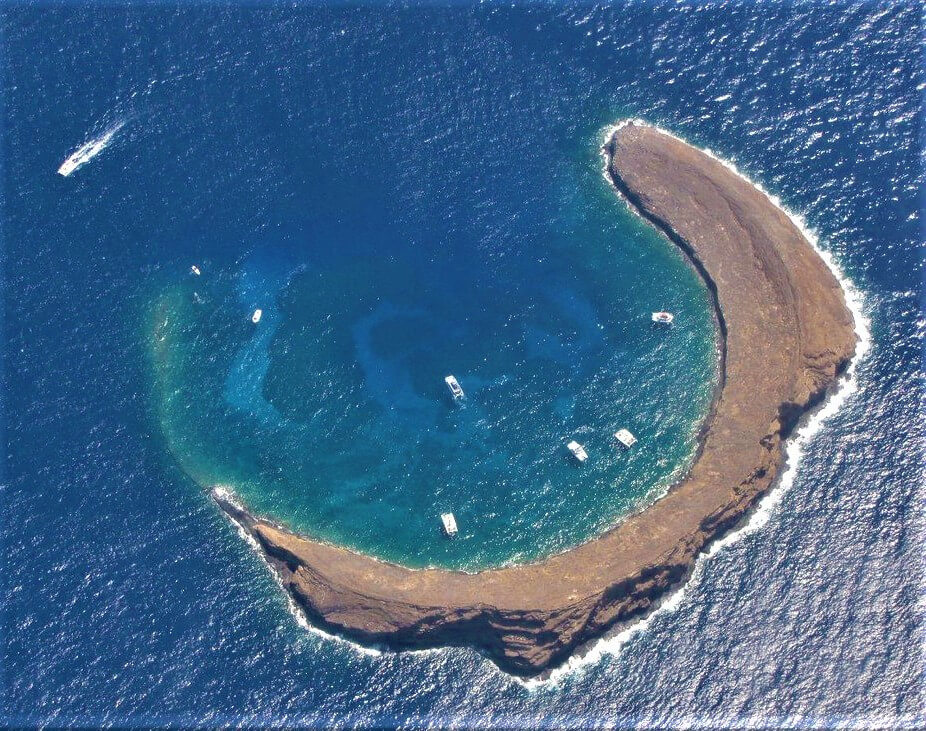
Molokini is a partially submerged volcanic crater about 3 miles off the Southwestern coast of Maui. There’s an abundance of coral inside the crater and the entire area is a protected wildlife sanctuary. The walls of the crater serve as a breakwater to calm the waters inside and minimize flow of ocean currents. All of this makes for some incredible snorkeling and bird watching. Some will even say this is the best snorkeling in all of Hawaii. You can only access Molokini Crater by boat.
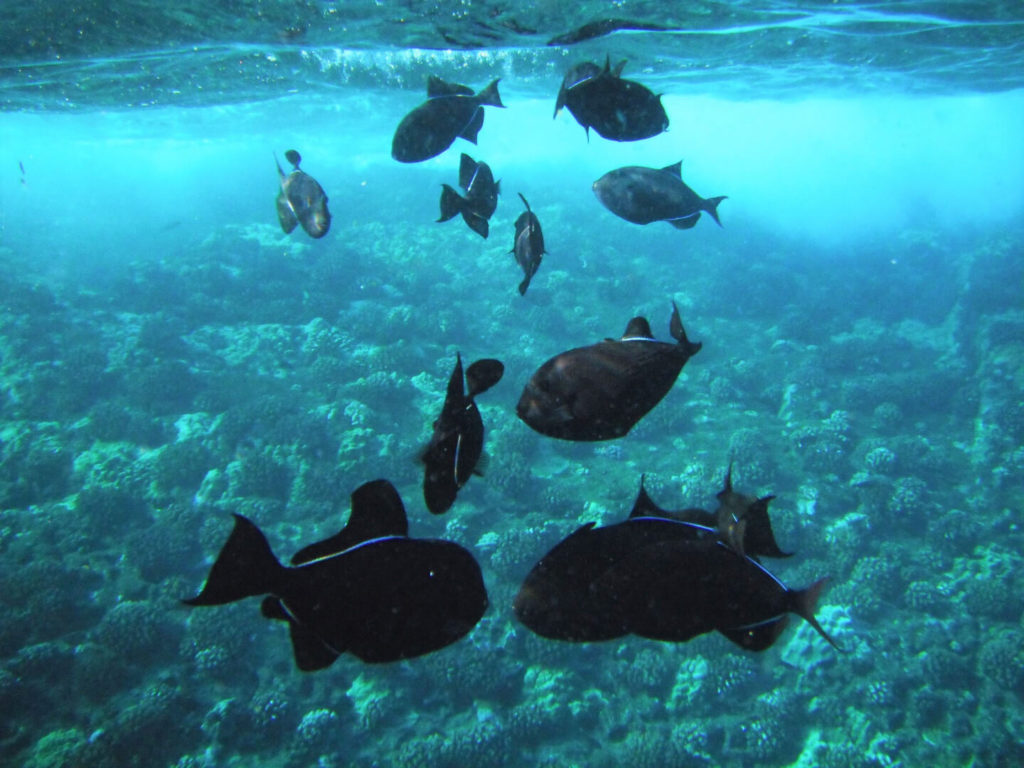
Snorkeling at Turtle Town
Maluaka Beach, which is back on Maui directly East of Molokini, hosts an abundance of sea turtle activity. This area is referred to as ‘Turtle Town’. To access this area, you can:
- Swim out with snorkel gear from the beach
- Take a tour boat from one of the marinas to the North
- Paddle over from Wailea using a rental kayak, paddleboard, or outrigger canoe.
For the paddling option, head to Hawaiian Ocean Sports in front of the Grand Wailea hotel or Wailea Scuba Surf Paddle in front the Fairmont Hotel. Both offer hourly rentals and tours with a two-mile paddle down to Maluaka. Standup Paddleboards are great for Turtle Town because you can really get a clear view into the water while standing on your board. However, tandem kayaks and outrigger canoes are better for storing gear and snacks. They’re also a bit safer out in the ocean in case one paddler gets tired.
This is an adventure that needs to be completed in the morning. The rental companies in Wailea will stop allowing paddlers to depart by noon on most days as the wind and surf start to pick up.
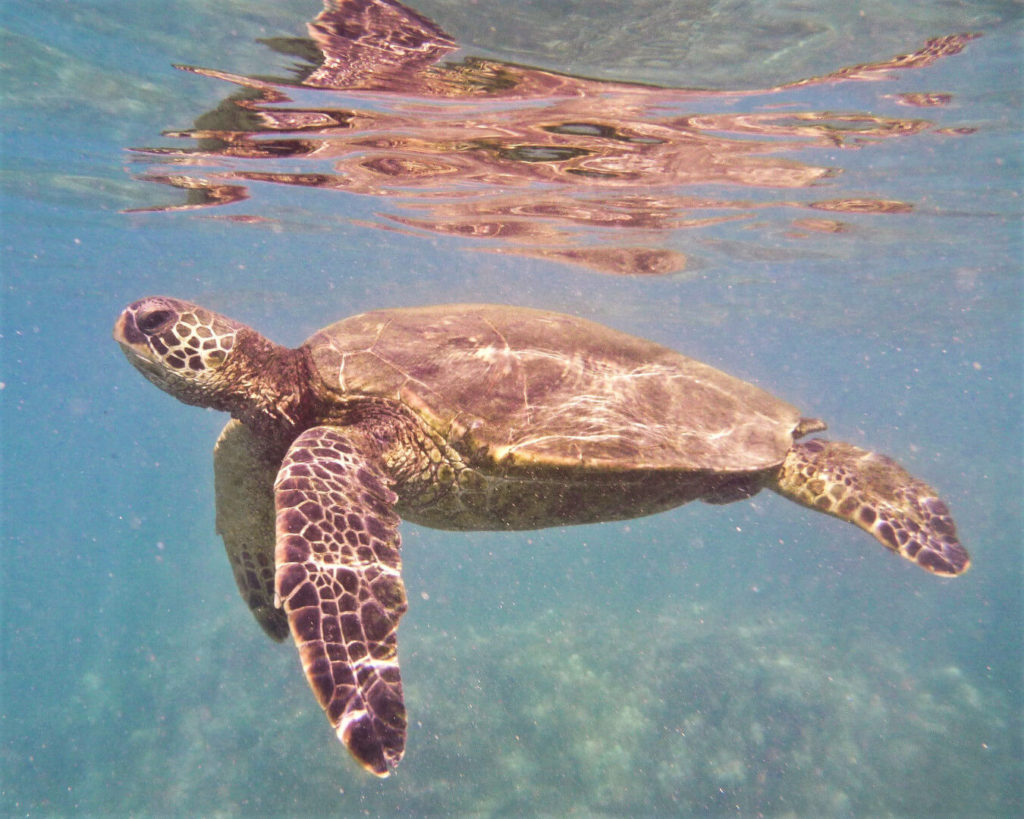
Lanai
Lanai is a sparsely populated island 9 miles West of Maui. You can get there from Maui by ferry, or on a private boat rental. Hulopoe Bay on the South side of Lanai is known for its snorkeling. It tends to be less crowded than Molokini. You can get here on a boat rental, charter boat or even take a ferry for $60 round trip.
Lanai also has some breathtaking underwater caves called the Cathedrals. However, this requires scuba diving to appreciate.
Whale Watching
More than half of the world’s humpback whales spend winter in Hawaii where they birth and nurture their calves. So, the months of January and February in Hawaiit make for some of the best whale watching anywhere. On Maui last January, it seemed like we could look out on the water in any direction for a minute or so and see the spray from a blowhole. Taking a private boat rental or charter out to the waters off Maui will give you a better chance at seeing them up close.
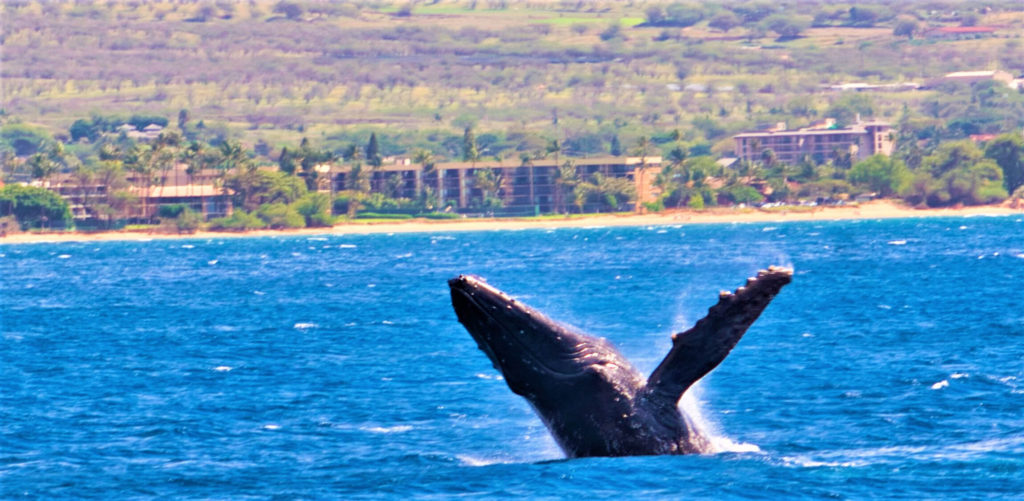
Boat Rental and Charter Options in Maui
Paddling Rentals on Maui
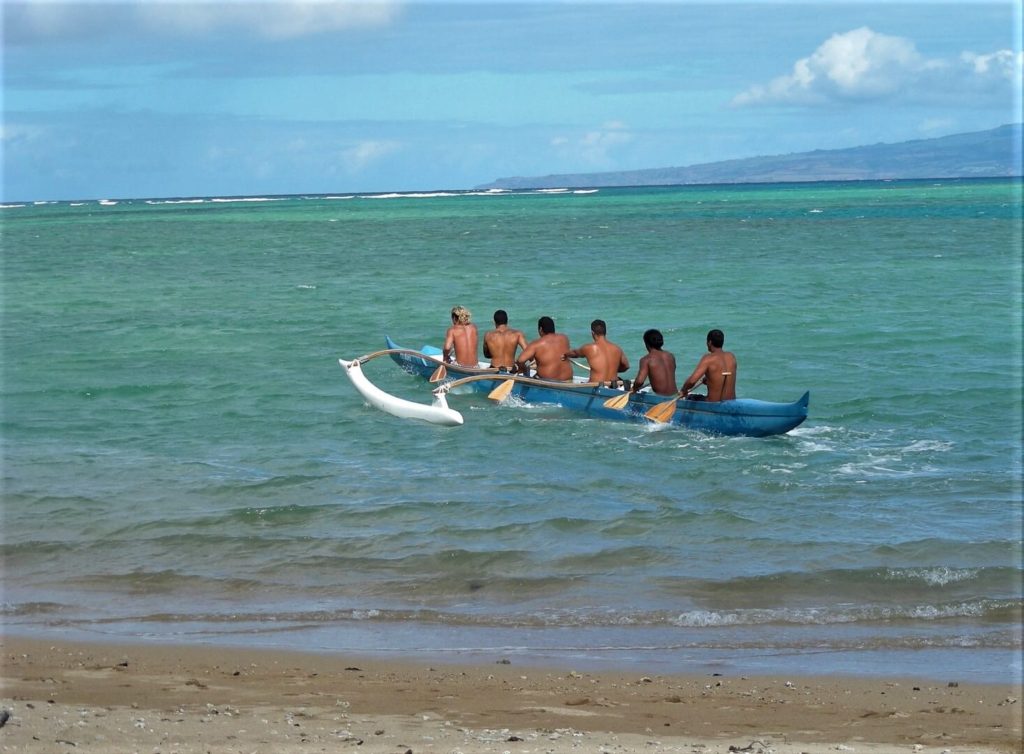
Most of the resorts in Maui have a modest equipment rental facility on the beach. About half of those rent stand-up paddleboards (SUPs) and sea kayaks. Many hotels also have one or two outrigger canoes that go out in small groups. We saw tour groups in sea kayaks and outrigger canoes about a mile off-shore.
Paddling in Maui consists of paddling out to sea on a short route and back to the beach. There are no navigable rivers, or much in the way of paddling destinations. However, this is a great way to get a bit of distance from the beach to snorkel.
Beach parking on Maui can be hard to find, so its best to look for a boat rental service within walking distance from your hotel. If you do rent from an outfitter that requires you to drive, be sure to ask if they can arrange free or validated parking at the hotel they operate from. Otherwise, you could wind up driving in circles hunting for an open parking space on the street or in public parks.
I also recommend waiting to reserve/commit until you are on the island. This equipment has a high degree of availability, and the websites are in no way indicative of what you’ll find on the beach on a given day.
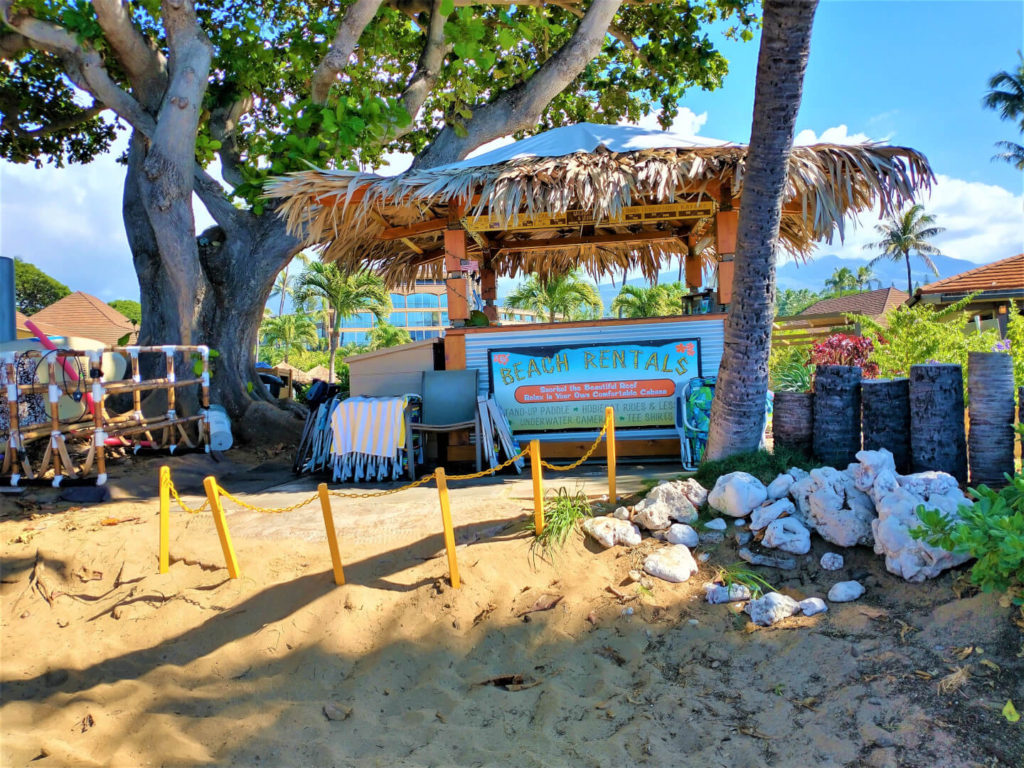
Sailboat Rentals on Maui
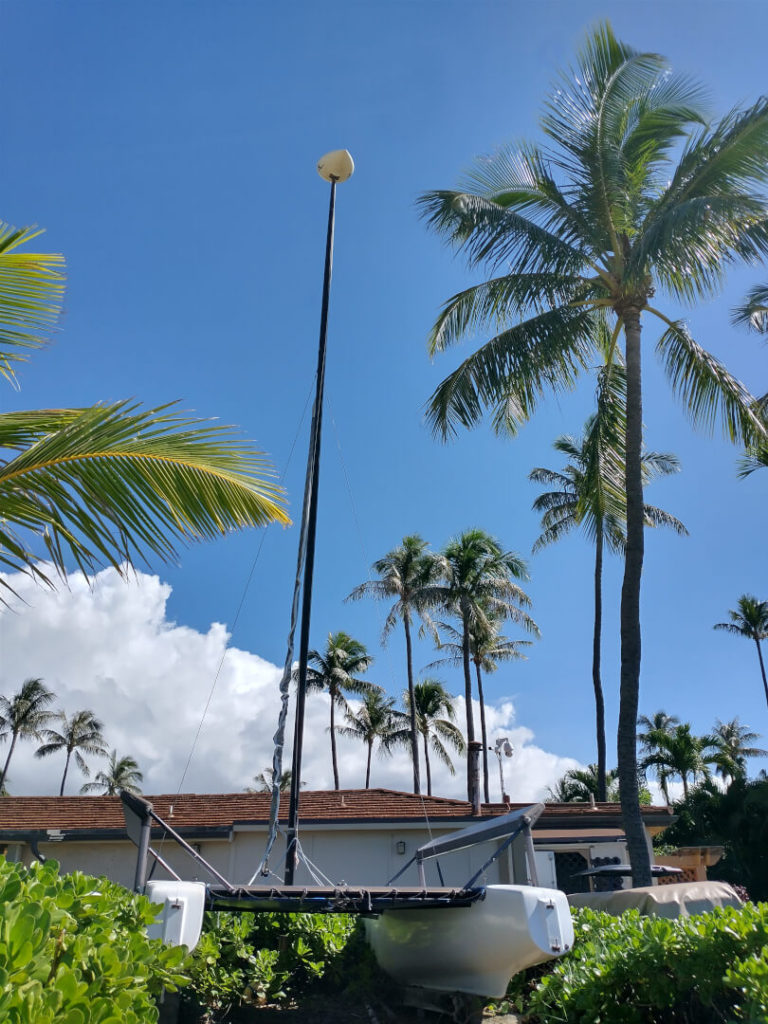
We found one Hobie Cat sailboat rental on Maui at the North end of Ka’anapali at West Maui Sailing School. To take this small catamaran out, you need to go with an instructor. The lesson costs $85, plus $25 for each additional person. Unfortunately, they only have one instructor, and for two years now we’ve been told he is out for several weeks with a back injury. We went by the outfitter to find out more. They do indeed have a Hobe 17 Getaway sailing catamaran with roller furling jib on a beach dolly. However, it seems the ‘sailing school’ has evolved into a primarily a beach rental similar to all the others with the sailboat gathering vegetation.
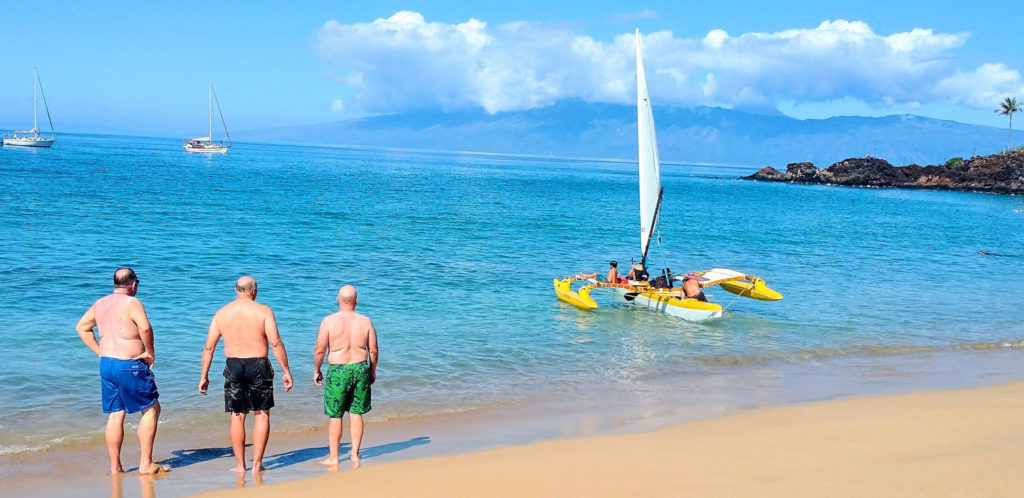
There is also an outrigger sailing canoe available for tours in Wailea. This trimaran departs from the beach in front of the Fairmont Hotel. While it appears to be a very sea-worthy vessel, the sailing rig itself is rather small. So, it could be a fun adventure, but likely not on the same order as a Hobie Cat.
Maui Day Boat Charters
The vast majority of visitors to Maui will find their way onto the water by day boat charter. There are a very wide variety of boats and tour types to choose from.
Snorkel/Sunset Cruises
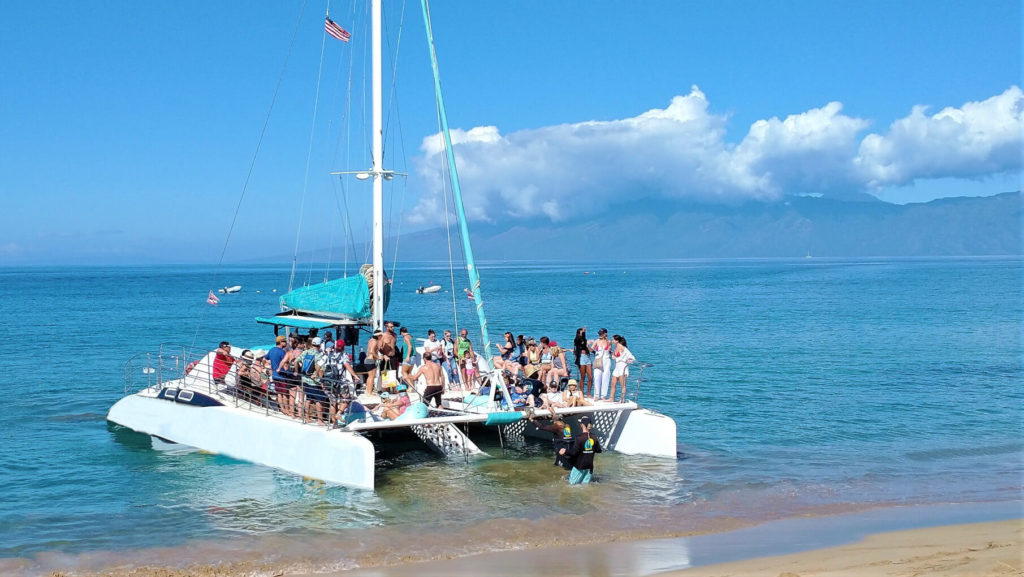
Beach catamarans of 50-60 feet board on the Ka’anapali beach at the Whalers Cove Mall, along with a number of Rigid Inflatable Boats (RIBs) of varying sizes. There are kiosks where the mall meets the beach to book a charter. The beach cats give you more opportunity to bask in the sun. However, the RIBs will get you to a destination and back much faster. Private charters are available for $1,300 per hour and up, including food and beverage. Sea Maui also has a monohulled sailboat for up to six people that goes for $1,300 for two hours.
A few downsides to note: I’ve never seen a single charter catamaran on Maui with its sails. So, if you are looking to sail, you may be disappointed. Sea Maui’s monohull, on the other hand, I have seen sailing. Many of these boats also looked uncomfortable crowded. So, if you aren’t an extreme extrovert, be sure to ask about capacity limits before booking a tour.
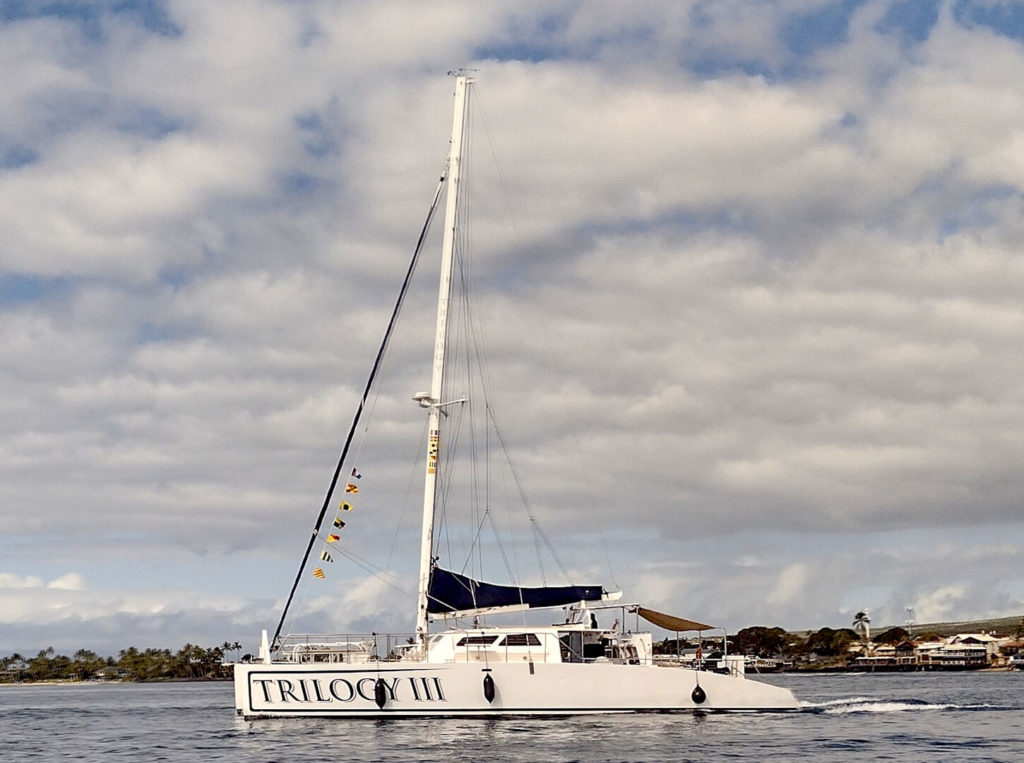
There are also a number of larger tour boats that leave from harbors in Lahaina and Kiehei. Maalaea harbor in Kihei is more convenient from Wailea, while Lahaina is near the Ka’anapali resorts.
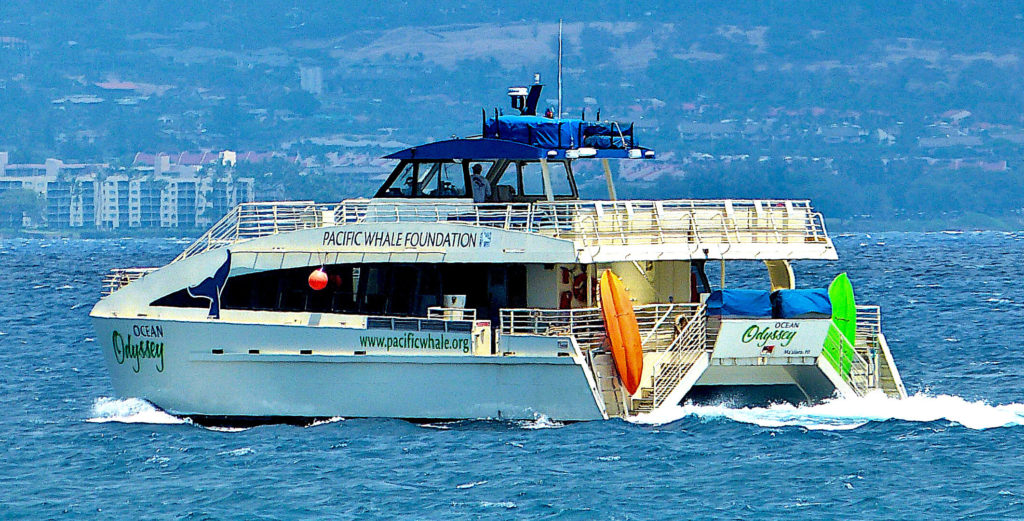
If you take a snorkel cruise, you’ll probably be pitched on renting a west suit or vest to stay warm in the frigid waters. We went to Molokini on a cloudy day in January. It was a little chilly for my taste, and I hate cold water, but I didn’t think a vest was necessary. I recommend bringing a ‘rash guard’ which is a swim shirt or moisture wicking athletic shirt to keep your torso a bit warmer. A pool noodle is also a great accessory to bring along; it helps you sit higher in the water so you can take breaks and stay a bit warmer in the sun.
Deep Sea Sportfishing Charters
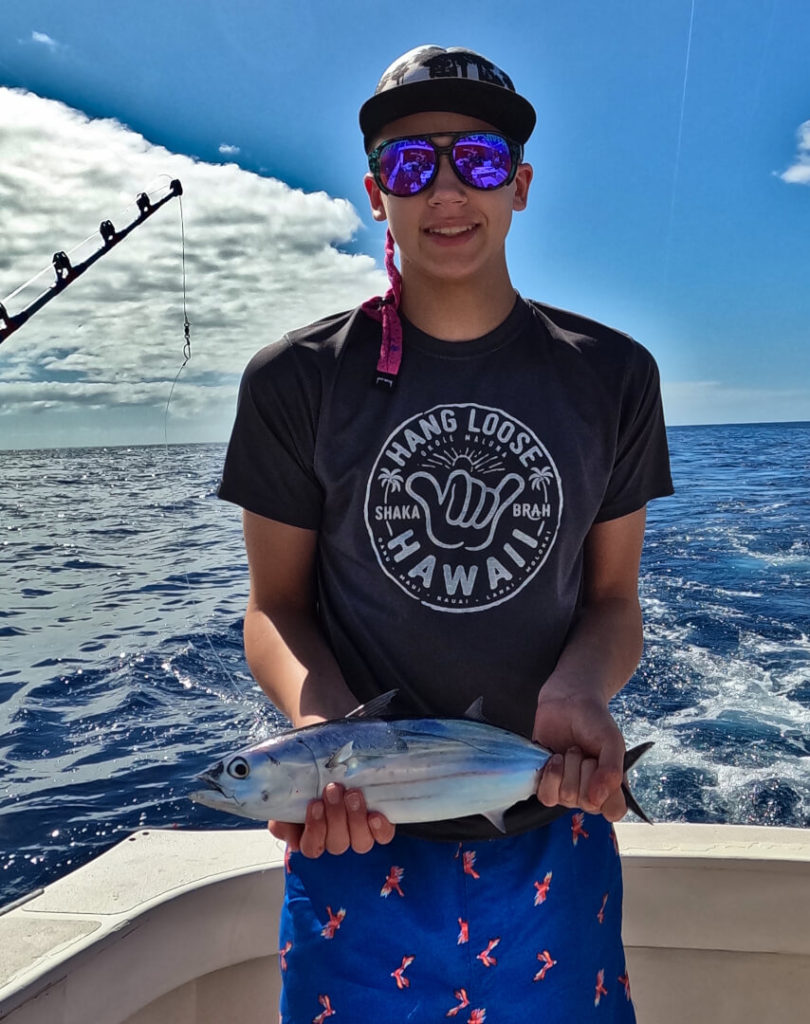
A number of fishing charter boats leave from harbors in Lahaina and Kiehei,. Price for a shared boat start at $200-$400 per person for 2-8 hours of fishing. If you’ve got a group, most companies also offer private charters. As with most of our boating recommendations in Hawaii, go as early as you can for calm water. Even if you don’t get sea-sick, your charter is much less likely to get cancelled or cut short in the morning. Read about our charter with Finest Kind Sportfishing here.
Maui Private Powerboat Rental (bareboat)
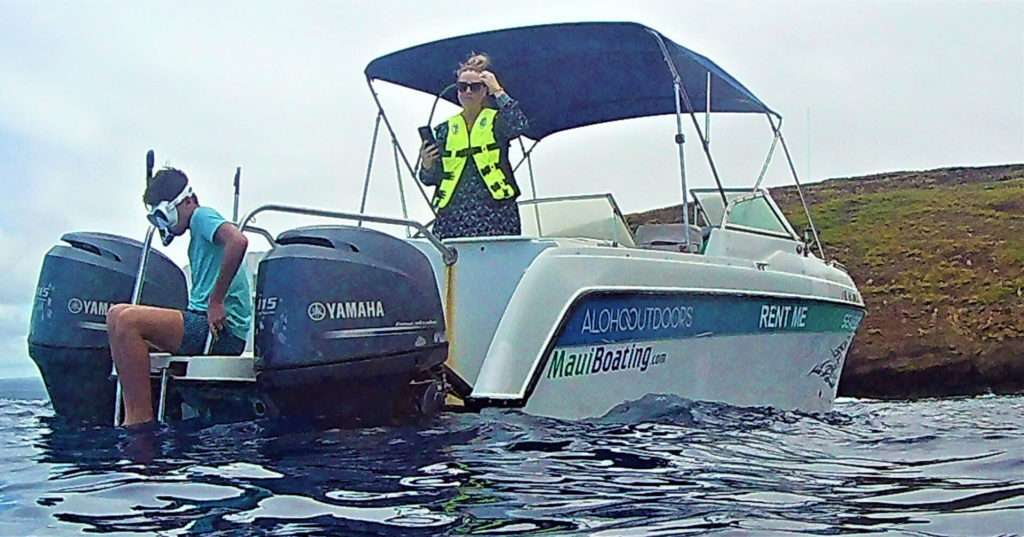
The one private boat rental opportunity we found on Maui without a captain (aside from paddling) was through Aloha Outdoors. This is the only true ‘bareboat‘ option we’re aware of on the island. Aloha Outdoors rents a fleet of three Glacier Bay 2240 SXs at the Kihei Boat ramp, just north of Wailea. These 23′ power catamarans are available for 2 to 6 hour intervals.
Powerboat Rental Checkout
On the day of our private boat rental, we arrived at 7:45am for an 8:00am reservation. There was one other group ahead of us, but we were out on the water by 8:30am. There was one dock hand with two trucks, so I assume some of the staff live close by. He did note they were currently short staffed.
The dock hand talked to us about our boating experience and shared the challenges unique to the area, discussed today’s forecast and reminded me several times that it is my decision to go out and come back, and nobody else’s. He encouraged us to go down and take a look at the inlet before we made a final decision to go out. Then he filmed a short video of me acknowledging my responsibility for the rental boat and my crew.
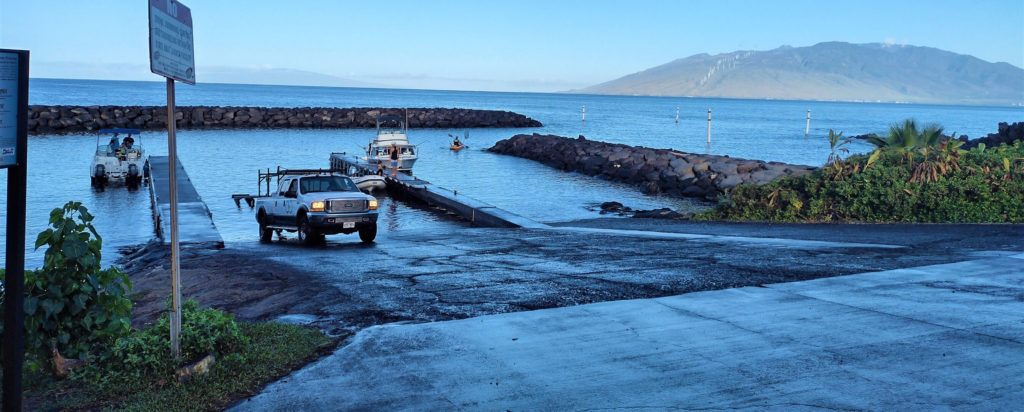
Coming and Going from the Dock
He puts the boat at the dock and sends us on our way. The marina is absolutely the most challenging that I’ve ever navigated. It has a huge rocky sea wall that keeps the water calm at the ramp and dock…although when the surf picks up the water can splash over the wall! The space around the docks and the rocky breakwater is relatively tight, and since it is the only recreational ramp in the area, it is relatively busy. It wasn’t congested, but there was a constant pace of boats coming in and out.
Once you are off the dock and turned around without hitting the rocks, you head for the end of the sea wall where you make a hard left and head straight out to sea. There are four very tall, well marked buoys to guide you in an out.
The challenge though is on the way back. Since you’ve been out for a few hours, the sea has picked up with larger swells than when you left. Coming in, you’ll have a following sea with the swells at your stern breaking to surf before you reach the inlet. The boat master warned us of the condition before we left and again over the phone when we called for a return pickup.
You have to time your re-entry across two concepts:
- Wait for a lull in the sea as big waves usually come in sets, then when the sea state has calmed
- Position your boat behind a swell with ample space before the next swell behind your boat.
Out on the Water
If you come in on top of a swell, it will push your boat uncontrollably toward the shore and into the rocks as you try to turn into the inlet. Once you safely get to the buoys and make your turn, you’ve gotta put the hammer down and get that boat behind the rocky breakwater before the next wave crashes. Then, once in the marina, quickly slow the boat to avoid the docks, traffic, and sea wall. As we discovered, the show isn’t over at that point. Calm your nerves, regain your fine motor skills, and idle back and forth until you have a clear dock space. Then, be gentler than you’ve ever been before coming into the dock: rather than a wooden dock or a wooden dock covered in tires or fire hose, your dock is made of concrete and rebar!
Once you are away from the shore, there really isn’t much in the way of navigation hazards to worry about. The bottom drops off quickly so there’s no running aground. There isn’t much boat traffic on this side of the island (the main port is on the East side of Maui), no crab pots, and no rivers emptying logs into the seaway.
If you want to snorkel in Molokini, take the 7am start. There are two buoys for recreational boats in the crater. Remember that arrived at 7:45am? There were two boats putting in when we arrived that we watched heading out. After we launched at 8:30am we headed directly to Molokini. When we arrived, the two recreational buoys had been picked up by the two boats we watched depart at 7:45am! So, we would have had first dibs at 7.
There are also a number of commercial buoys available that you can use after 10:30. There are plenty there, so you’ll likely have no trouble finding a free one. However, you have to dive or get in the water and maneuver your boat hook to get the rope, which is about 8′ deep, and then thread the line from your boat. It can be done, but some combination of rough conditions, inexperienced crew, and a crowded crater might have you rethinking it.
While Molokini is the most obvious destination for a boat rental on this side of Maui, the state maintains a number of mooring balls throughout the area with their locations recorded here. The charter company will tell you, and I agree, the anchor really should only be for emergencies out here because of the coral and harsh conditions, so these will be your only practical options for ‘stops’.
The charter company will rent fishing gear for $85 per pole and the boat is definitely set up for it. Hawaii does not require a fishing license, so there’s no additional cost or paperwork to do this.
The whale watching is unbeatable if you are out during January or February. We had to stop our boat three times for whales that came within 100 yards of our boat while cruising around. We saw lots of breeches and felt surrounded the entire time on the water.
What to Expect in the Rental Boat
These boats have been taken in and out of a rough saltwater harbor and fished on by renters for many years, and that’s how they look. They’re stained, rusted, and faded. The rub rails are well used, and the fabric is well worn. However, our boat was mechanically sound and it was obvious that Aloha Outdoors looks after the boats very well. So, it isn’t a plush cream puff for filming rap videos, but it has a comfortable seating layout and room for fishing. The rental company limits your group size to six. Six adults will have plenty of room to stow their gear and stretch out on this boat.
The twin Yamaha outboards with almost 3,000 hours both ran, started, stopped, and shifted without complaint. The boat has full redundancy with separate fuel and electrical systems for each engine, giving you a strong margin of safety should anything go wrong. The only thing not working on our boat was one of the fuel gauges; but we had confidence in fuel in the other tank and I’ve never trusted a marine fuel gauge anyway.
You can read more about our experience with the boat here.
What to bring on a Private Powerboat Rental in Maui
Bring food, plenty of drinking water, reef safe sunscreen and ginger ale. If the weather picks up, you could be out longer than you expected before it is safe to come in. So be prepared for that with appropriate provisions. While the catamaran hull handled the chop incredibly well, it did have quite a bit of side-to-side roll. Busy Boater Jr experienced his first bought of sea sickness out here. Ginger ale or ginger snaps can help settle a stomach at sea. Consider having any crew that might get seasick take Dramamine. We also brought a pair of binoculars, as none are provided with the boat rental.
What kind of Skills and Experience do You Need to Rent a Private Powerboat on Maui?
Renting a powerboat on Maui without a captain is definitely not for an inexperienced crew and may not even be suitable for many experienced lake boaters. Being confident handling a powerboat in rough seas and navigating an unfamiliar coastline with a GPS is a is a must. Aloha Outdoors does offer the option to go out with an instructor. This would be a fantastic opportunity to get some rough water experience for future adventures.
How Much Does the Powerboat Rental Cost?
Currently, the least expensive rental option is $695 for five hours. Last year, before they ran into a staffing shortage, they offered shorter trips for as low as $295. You’ll also be charged for fuel at the end of your charter, based on what you’ve used. We were out for about 4 hours, and they estimated we used 15 gallons of fuel and charged us $4.85 per gallon for $72.75 in fuel. That price was in line with the pumps in the area. With tax, our total 5-hour charter charge was $817.56.
The website says there is no insurance available for these charters. However, when we booked, there was an offer of $100 per $1,000 of coverage. That seemed pretty steep, so we decided to roll the dice.
Parking is free at the Kihei Boat Ramp; there seemed to be an adequate amount, but we were there on a weekday.
If you can, book your reservation at least a week ahead of your trip to the island as they do fill up.
Jet Ski Rentals on Maui
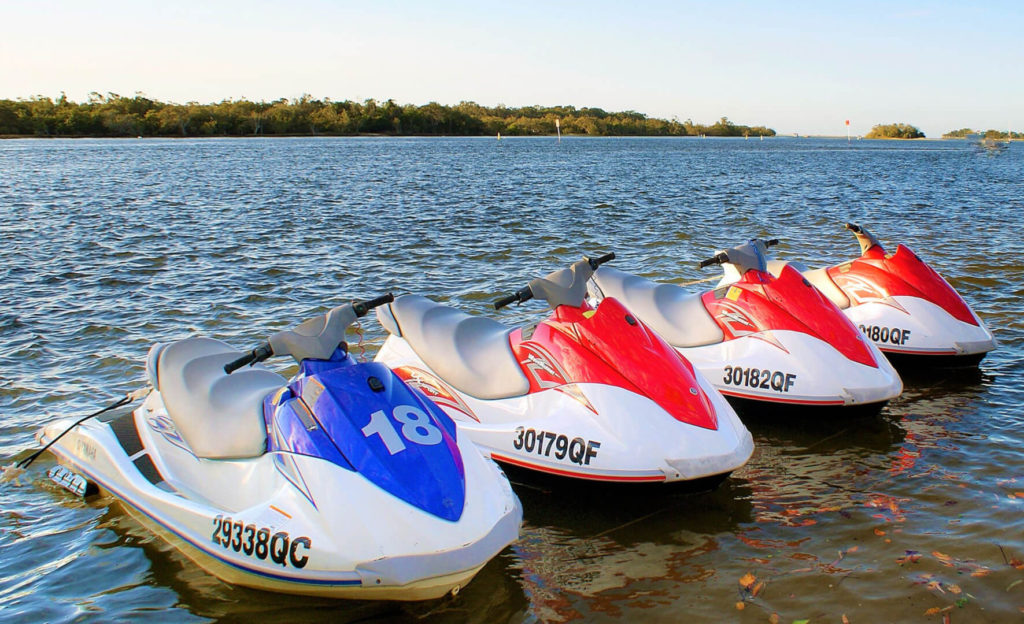
Maui Water Sports rents jet skis on the beach in Ka’anapali for $99 for 45 minutes plus $50 for an additional rider. No experience is necessary to take this tour. Jet Skis handle rough water very well for a number of reasons, and these rentals leave from a floating dock, so its east to maneuver in and out. There’s a big caveat though: you can’t rent jet skis during whale season (December 15 through May 15).
Unless you are with a child that is too young to take their own ski, I highly recommend riding alone. For the most part, jet skis are a lot more fun with one person: they will go faster with less weight, and you’ll feel more comfortable making quick turns and doing sweet jumps without a passenger that’s less able to anticipate what’s coming. On older jet skis, it was fun to put a passenger on the back and try to throw them off. However, newer jet skis are so big and stable that you have to be moving so fast and violently to throw someone off, it gets dangerous.
Public Service Announcement: one of jet skis’ best attributes is also their Achilles heel: they’re easy for inexperienced riders to operate. Many inexperienced riders the world over head out without an understanding of the rules of the road, or respect for fellow boaters. This has led to Jet Skis being banned in certain waters and implementation of licensing requirements in others. When you Jet Ski, please keep a lookout in all directions for other boats and give others plenty of room to operate. Be mindful of your wake; it can ruin a peaceful day on the water for paddlers and other small boats.
Boogie Boarding on Maui
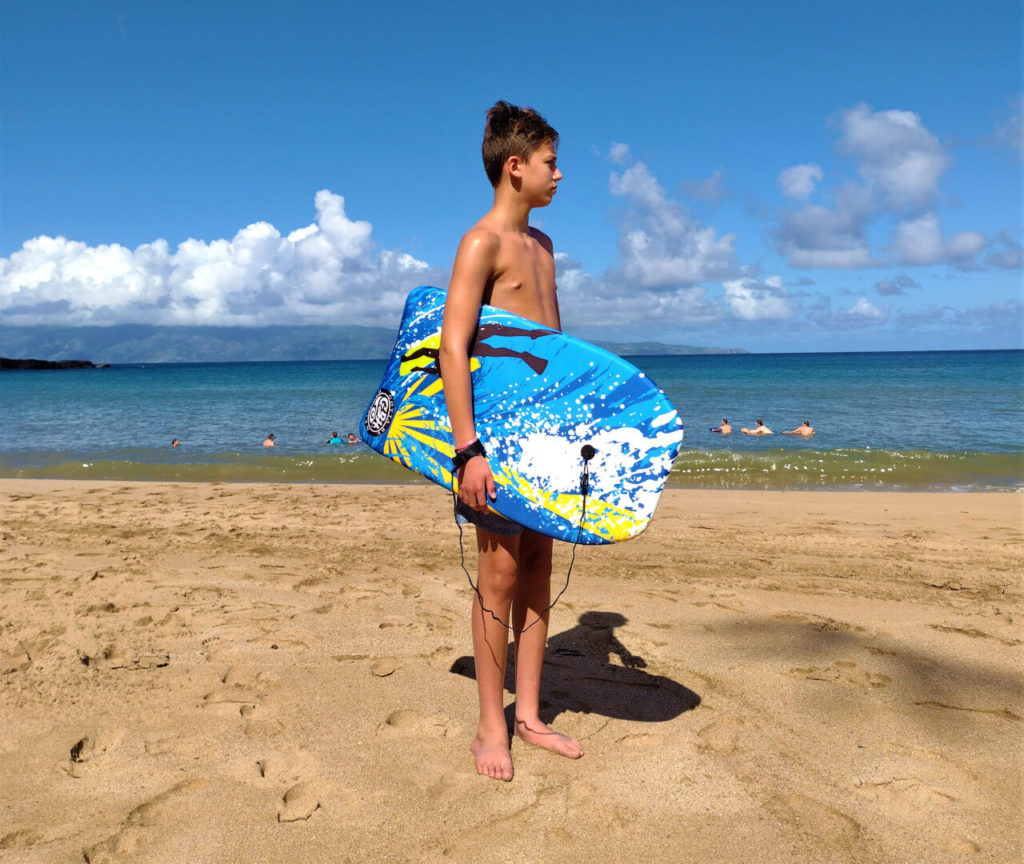
One of the simplest ways to enjoy the waters of Hawaii is with a boogie board. You can rent these on the beach, but we bought ours for $12.99 at the grocery store. They also sell this same model at the ABC Store for $14.99, along with some larger, slightly more expensive models. This is also one alternative that favors the afternoon, since you’ll be looking for some bigger surf to ride those waves.
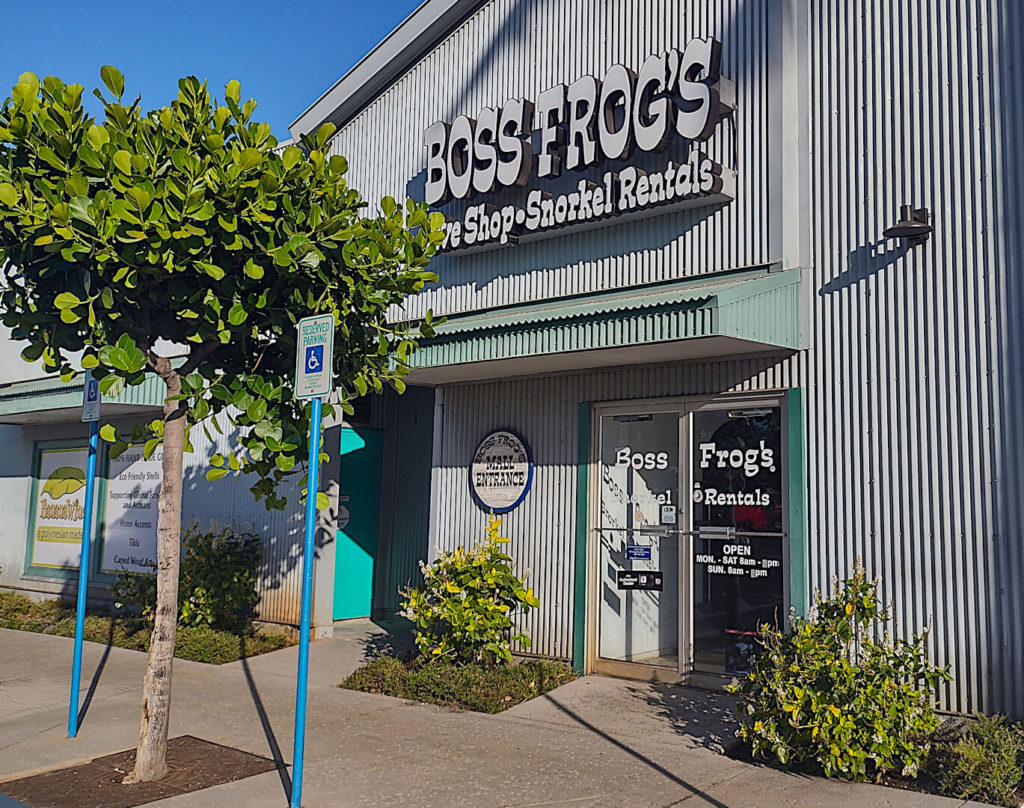
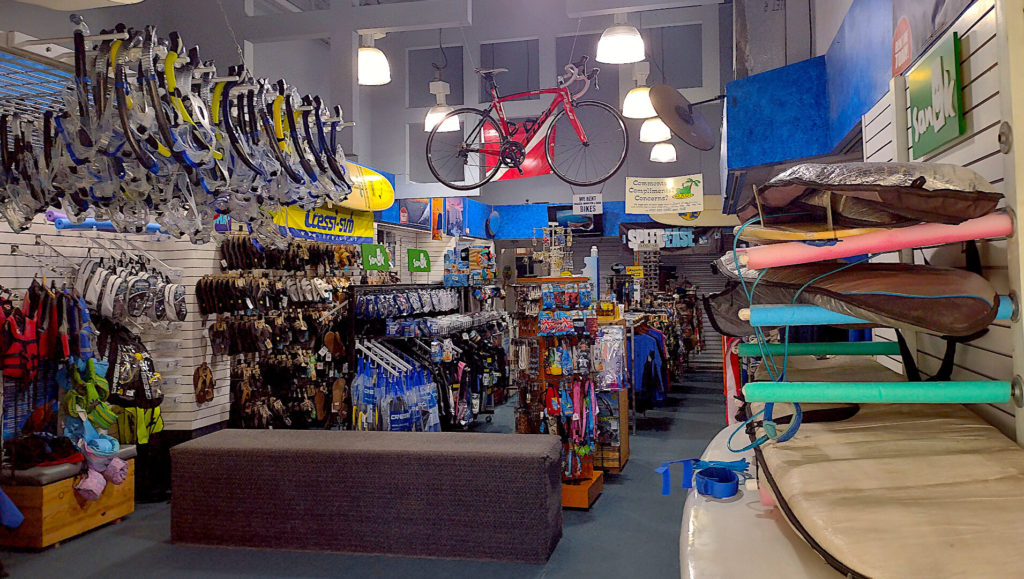
More recently, we rented a boogie board from Boss Frogs in Lahaina. $25 got us a larger, sturdier board for the full week that we returned on our way to the airport. This is a great place to rent all kinds of gear for the beach, by the way.
Getting to Your Maui Boat Rental
The main airport on Maui, OGG, offers daily direct flights from all major cities on the US West Coast. There are also flights from a few Canadian cities, O’Hare and JFK. Outside of those areas, you’ll get here by connecting through the West Coast, or Honolulu, on the nearby island of Oahu.
OGG is a very easy airport to access. Security lines are short and rental cars are within walking distance of the terminal.
A rental car is usually the best option to get around the island of Maui because most resorts and boating destinations are 30+ minutes from the airport, and attractions are spread out far enough that walking or taking public transportation is not very practical. Hotels here charge the price of about three margaritas plus tip per day for valet parking, but self-parking is often available free of charge.
Further Reading
Be sure to check out Busy Boater adventures on the islands of Oahu and Kauai.
